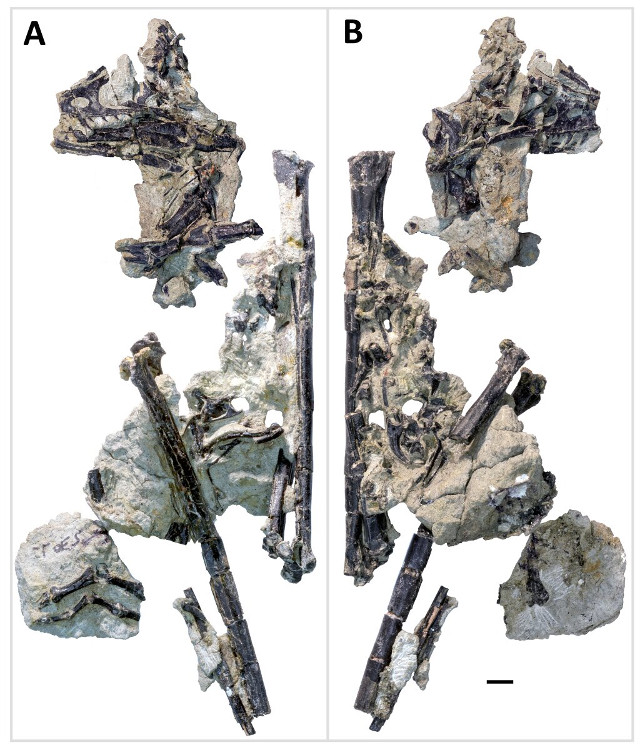 An article published in the journal “PeerJ” reports the identification of a new species of feathered dinosaur dating back to about 150 million years ago, in the Late Jurassic period, in today’s Wyoming, USA. A team of paleontologists named it Hesperornithoides miessleri and classified it in the troodontid family, dinosaurs with various characteristics similar to birds. This species seems to be a primitive member of that group, an unusual discovery that raises new questions about the timeline of the evolution of birds and of flight in other dinosaurs belonging to groups that got extinct.
An article published in the journal “PeerJ” reports the identification of a new species of feathered dinosaur dating back to about 150 million years ago, in the Late Jurassic period, in today’s Wyoming, USA. A team of paleontologists named it Hesperornithoides miessleri and classified it in the troodontid family, dinosaurs with various characteristics similar to birds. This species seems to be a primitive member of that group, an unusual discovery that raises new questions about the timeline of the evolution of birds and of flight in other dinosaurs belonging to groups that got extinct.
In 2001 a partial feathered dinosaur skeleton was discovered during the operations needed to remove earth and rocks from the bones of a completely different type of dinosaur, a Supersaurus vivianae, one of the giant long-necked dinosaurs that lived in that area in the Late Jurassic. The partial skeleton of a dinosaur that had an estimated length of around 90 centimeters was cleaned up. The top image (courtesy Levi Shinkle) shows it from the left (A) and right (B) after its final preparation.
A first description of this feathered dinosaur was published in 2005 in an article (link to PDF file) in the “Journal of Vertebrate Paleontology” but the skeleton changed ownership some times and only in 2015 a team was formed to study appropriately the specimen cataloged as WYDICE-DML-001 and nicknamed Lori.
The characteristics of the species that was named Hesperornithoides miessleri indicate that it was a species that lived on the ground and despite that it was a proto-bird. In the area where it lived there were no trees so this dinosaur was a runner. This makes its discovery surprising, together with the fact that the Morrison Formation in Wyoming is famous for the discovery of big dinosaurs, certainly not troodontids.
Scott Hartman, lead author of this research, explained that you just need to make a few changes in the characteristics of Hesperornithoides miessleri to make it a closer relative to Velociraptor than to Troodon, the genus that gave its name to the troodontid family. Adding information about other species related to the one just identified, the idea that a series of characteristics needed for flight evolved a number of times starting from species that lived on the ground was confirmed.
Among the feathered dinosaurs mentioned by Scott Hartman there are Microraptors and recently the study of a specimen of the species Microraptor zhaoianus was reported in an article published in the journal “Current Biology”. That’s another case in which the authors referred to various characteristics needed for flight. Research shows again a complex situation with different adaptations.
According to the researchers who studied Hesperornithoides miessleri, bird flight evolved most likely in the Late Jurassic or shortly later, in Early Cretaceous. New discoveries of feathered dinosaur fossils and new research on specimens known sometimes for a long time keep on offering new information and will be a test for this theory.


